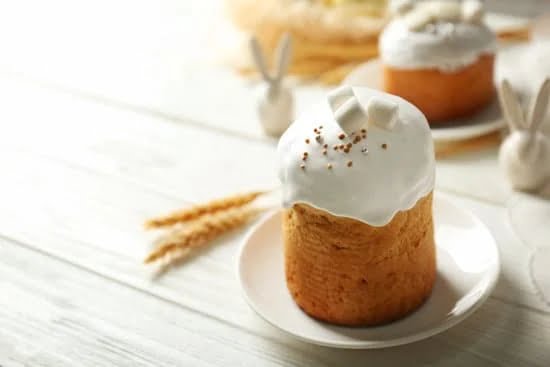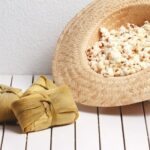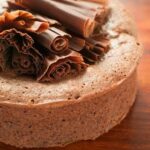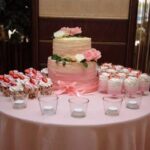Cake decorating practice is a crucial aspect of honing one’s skills in the artistry of creating beautiful and delectable cakes. Whether you are an aspiring professional baker or simply a passionate home baker, dedicating time to regular practice can greatly enhance your ability to produce visually stunning and intricately designed cakes. This article will delve into the importance of cake decorating practice and provide valuable tips, techniques, tools, and resources to help you improve your skills.
In the world of cake decoration, practice is not only encouraged but essential. It allows you to experiment with different techniques, refine your skills, and develop your own unique style. With every practice session, you gain experience in handling various tools and materials, understanding the properties of different ingredients and icing techniques, and gaining confidence in your abilities as a cake decorator.
Regular practice offers numerous benefits that go beyond just enhancing your technical skills. By engaging in cake decorating regularly, you stimulate your creativity and expand your artistic horizons. It allows you to explore new ideas, themes, color combinations, and design elements that can elevate your cakes from ordinary to extraordinary. Additionally, practicing cake decorating can be a therapeutic activity that provides an outlet for self-expression and relaxation.
No matter if you are a beginner or an experienced decorator looking to refine your craft further, this article will guide you through setting up a dedicated space at home for cake decorating practice. It will also cover the essential tools and supplies needed for effective practice sessions. Furthermore, it will delve into various techniques that can be practiced to improve specific aspects of cake decoration.
Stay tuned to discover some invaluable tips and tricks as well as guidance on crafting a personalized practice schedule for maximum efficiency. Finally, we will explore how enrolling in classes or workshops can take your cake decorating skills to new heights.
Get ready to immerse yourself in the world of cake decorating practice as we embark on this journey together.
Benefits of Regular Cake Decorating Practice
Regular cake decorating practice offers a range of benefits that can significantly enhance your skills in this creative and delicious art form. Whether you are a professional baker or an enthusiastic home cook, dedicating time each week to practice can improve your techniques, broaden your creativity, and boost your confidence in cake decorating.
Improvement in Techniques
One of the key benefits of regular cake decorating practice is the improvement in techniques. As with any skill, consistent practice allows you to refine your abilities and develop greater precision and control over your hands. By regularly piping frosting, creating intricate designs, and experimenting with different tools, you will gradually master various techniques such as buttercream flowers, fondant detailing, and smooth icing consistency.
Furthermore, practicing regularly enables you to try out new techniques without the pressure of producing a perfect cake for an important event. This allows you to push the boundaries and explore innovative ideas without fear of failure. With time and practice, you will become more comfortable incorporating these techniques into your regular cake decorating repertoire.
Creative Development
In addition to improving technical skills, regular cake decorating practice enhances your creative development. Each session offers an opportunity to experiment with color palettes, design elements, and themes. Trying out different combinations not only expands your aesthetic understanding but also helps unleash hidden creativity.
As you continue practicing on a regular basis, you will find yourself developing a unique style and signature touch that distinguishes your cakes from others. It is through consistent exploration and experimentation that true originality emerges.
Boosting Confidence
Regularly practicing cake decorating has a direct impact on boosting confidence. The more cakes you decorate-and the more challenges you overcome-the more confident you become in tackling new projects. By persistently working on honing existing skills while learning new ones, you will build a solid foundation of knowledge and expertise that will boost your self-assurance when confronting complex designs or demanding clients.
Additionally, practicing cake decorating regularly allows you to learn from your mistakes and refine your techniques. Each successful outcome further strengthens your belief in yourself and your abilities. Over time, this confidence will manifest itself in the quality of your work, leading to greater satisfaction in both the process and final product.
With regular practice, you can reap these benefits and truly elevate your cake decorating skills to new heights. The next section will provide guidance on setting up a dedicated space for cake decorating practice within the comfort of your own home.
Setting Up a Cake Decorating Practice Space at Home
When it comes to cake decorating, having a dedicated practice space at home can make all the difference in honing your skills. Creating a designated area where you can focus on perfecting your techniques will not only help you improve faster, but also make the process more enjoyable. In this section, we will explore some tips and recommendations for setting up an effective cake decorating practice space right in the comfort of your own home.
The first thing to consider when setting up your practice space is finding a suitable location. Look for an area in your home with ample lighting and enough countertop or table space to comfortably work on your cakes. Natural light is ideal, but if that’s not possible, invest in good quality task lighting to ensure you can see the details of your designs clearly.
Once you’ve chosen a location, it’s time to organize your tools and supplies. Keep them within reach so that you don’t waste time searching for them during practice sessions. Consider using clear storage containers or dividers to keep things organized and easily accessible. It’s also helpful to have a dedicated shelf or drawer specifically for cake decorating tools and supplies.
| Essential Tools | Essential Supplies |
|---|---|
| Piping bags and tips | Icing colors |
| Offset spatulas | Fondant |
| Serrated knives | Cake boards and drums |
| Bench scraper | Edible decorations (sprinkles, pearls, etc.) |
Investing in quality tools and supplies will not only improve your practice experience but also the final results of your cake decorating. Having everything you need easily accessible will save you time and frustration during practice sessions, allowing you to focus on perfecting your techniques.
By dedicating a space in your home solely for cake decorating practice, you are creating an environment that fosters creativity and growth. Setting up a well-organized practice area with all the essential tools and supplies you need will make the process more efficient and enjoyable. With a proper cake decorating practice space at home, you’ll be well on your way to becoming a master cake decorator in no time.
Essential Tools and Supplies for Cake Decorating Practice
To effectively practice cake decorating, it is essential to have the right tools and supplies. These items not only ensure that your creations turn out beautiful, but they also make the process much easier and more enjoyable. In this section, we will outline the essential tools and supplies needed for cake decorating practice.
One of the most important tools for cake decorating is a good quality set of piping tips and bags. These allow you to create intricate designs and patterns on your cakes, cupcakes, and cookies. Look for a set that includes a variety of tips in different shapes and sizes to give you versatility in your designs.
Another important tool is a turntable or rotating cake stand. This allows you to easily spin the cake while you are decorating, making it easier to reach all sides and angles. It also helps create smooth and even icing surfaces.
In addition to piping tips and bags and a turntable, some other essential tools for cake decorating practice include an offset spatula for smoothing icing, a bench scraper for creating sharp edges on cakes, a pastry brush for applying simple syrups or glazes, and a cake leveler for slicing cakes evenly.
When it comes to supplies, high-quality ingredients are key. Make sure you have fresh eggs, butter at room temperature, and high-quality flour and sugar. It is also important to have a variety of food coloring gels or powders to achieve vibrant colors in your designs.
Furthermore, having a good assortment of decorating accessories such as edible pearls, sprinkles, edible glitter, fondant molds, stencils, and impression mats can add extra detail and creativity to your cakes.
By investing in these essential tools and supplies for cake decorating practice, you will be well-equipped to develop your skills and create stunning desserts. Remember that while these items may seem like an upfront expense, they are an investment in your hobby or potential business venture as they will enhance both the process and final result of your cake decorating practice.
Different Techniques to Practice for Cake Decorating
Cake decorating is a skill that requires practice and mastery of various techniques. Whether you are a beginner or an experienced baker, there are always new techniques to learn and refine. In this section, we will explore some of the different techniques that you can practice for cake decorating.
One technique that is essential for any cake decorator is piping. Piping involves using a pastry bag fitted with a piping tip to create intricate designs and patterns on cakes. With practice, you can learn to create beautiful roses, borders, and other decorative elements using different piping techniques such as shell, rosette, and basketweave.
Another technique that you can practice is fondant work. Fondant is a smooth sugar paste that can be rolled out and draped over cakes to create a sleek and polished look. It is important to practice working with fondant to achieve a smooth finish and sharp edges. You can also practice creating fondant decorations such as flowers, bows, and figures to add an extra touch of creativity to your cakes.
Additionally, practicing icing techniques is crucial for achieving professional-looking cakes. This includes mastering the art of crumb coating – applying a thin layer of icing to seal in crumbs before adding the final coat of icing. You can also practice different icing finishes such as smooth buttercream or textured royal icing.
To keep track of your progress and assess your skills, consider creating a checklist or portfolio where you document each technique that you have practiced and mastered. This will not only help you track your improvement but also serve as a reference for future cake decorating projects.
By practicing these different techniques regularly, you will not only enhance your skills but also build confidence in your ability to create stunning cakes. Remember that cake decorating is an art form that requires patience and dedication, so embrace every opportunity to practice and improve your craft.
Relevant Data Table
| Technique | Description |
|---|---|
| Piping | The art of creating intricate designs and patterns using a pastry bag and piping tip. |
| Fondant work | A technique that involves rolling out smooth sugar paste to cover cakes and create decorative elements. |
| Icing techniques | Mastery of various icing finishes, such as crumb coating, smooth buttercream, and royal icing textures. |
Tips and Tricks for Effective Cake Decorating Practice
Practicing cake decorating is important for both beginners and experienced cake decorators. By regularly practicing, you can improve your skills, experiment with new techniques, and develop your own personal style. However, effective cake decorating practice requires more than just repetition. In this section, we will explore some tips and tricks to make the most out of your practice sessions.
Start with Basic Techniques
Before diving into complex designs, it is crucial to master the basic techniques of cake decorating. Begin by practicing simple piping techniques like borders, rosettes, and writing. As you become more comfortable, challenge yourself with more advanced techniques such as figure piping or creating intricate flowers. By building a solid foundation with the basics, you will have a better understanding of how to execute different designs.
Break Down Designs
Complex cake designs often consist of multiple components or elements. To effectively practice these designs, break them down into smaller parts. Focus on mastering each component individually before combining them into a complete design. For example, if you are working on a cake with intricate fondant detailing and piped flowers, practice each element separately first. This approach allows you to hone in on specific skills and troubleshoot any issues before attempting the entire design.
Use Different Mediums
While buttercream icing is commonly used in cake decorating, don’t be afraid to experiment with other mediums during your practice sessions. Try using fondant or gum paste to create unique decorations or experiment with different frosting textures such as royal icing or whipped cream. Working with diverse mediums not only adds variety to your practice but also expands your skill set and creativity.
Seek Feedback
One of the best ways to improve your cake decorating skills is through feedback from others. Share your finished creations with family members, friends, or fellow decorators for constructive criticism. They may offer valuable insights or suggestions for improvement that you may not have noticed yourself. Constructive feedback can help you identify areas of weakness and guide your future practice sessions.
Practice Patience
Remember that cake decorating is a skill that takes time to develop. Be patient with yourself and understand that progress comes with practice. Some techniques may take longer to master, and mistakes are part of the learning process. Embrace the journey of improving your skills and enjoy the creative outlet that cake decorating provides.
Incorporating these tips and tricks into your cake decorating practice routine can help you become a more skilled decorator. With dedication, perseverance, and a willingness to learn, you’ll be creating stunning cakes in no time.
Crafting a Personalized Cake Decorating Practice Schedule
Creating a personalized cake decorating practice schedule is essential for those looking to improve their skills and master the art of cake decoration. By establishing a regular practice routine, individuals can not only enhance their technique but also build confidence and develop their own unique style. Here are some tips to help you craft an effective cake decorating practice schedule:
- Assess your current skill level: Before designing your practice schedule, it’s important to assess your current skill level and identify areas where you need improvement. This will help you prioritize which techniques to focus on during your practice sessions.
- Determine the frequency and duration of practice: Consider how much time you can dedicate to cake decorating each week and decide on a realistic schedule. Whether it’s practicing for an hour every day or setting aside a few hours each weekend, consistency is key when it comes to improving your skills.
- Set specific goals: Setting specific goals for each practice session will keep you motivated and allow you to track your progress over time. For example, one goal could be perfecting a specific piping technique or experimenting with different color combinations.
To better organize your practice sessions, here is a sample personalized cake decorating practice schedule:
- Monday: Focus on mastering the art of buttercream rosettes.
- Tuesday: Experiment with different fondant textures and learn how to create basic fondant decorations.
- Wednesday: Practice piping techniques such as drop flowers and ruffles using royal icing.
- Thursday: Explore advanced techniques like sugar flowers or sculpted cake designs.
- Friday: Try out new recipes and experiment with flavors and fillings.
- Saturday: Dedicate time to reviewing any areas that need improvement or trying out more challenging designs.
- Sunday: Take a break from structured practice and spend some time browsing cake decorating inspiration online.
Remember, this is just a sample schedule – feel free to customize it based on your own preferences, goals, and available time. The key is consistency and dedicating regular time to practice and refine your skills. With a personalized cake decorating practice schedule, you’ll be well on your way to becoming a master cake decorator.
Troubleshooting Common Issues in Cake Decorating Practice
Cake decorating practice is a skill that requires time, patience, and dedication. As with any practice, there may be common issues that arise along the way. Troubleshooting these issues is essential to continue progressing and improving your cake decorating skills. In this section, we will explore some of the most common issues that arise during cake decorating practice and provide tips on how to address them.
One common issue that many beginners face in cake decorating practice is achieving smooth and even icing on their cakes. Uneven or lumpy icing can affect the overall appearance of the cake and make it difficult to achieve a professional finish.
To troubleshoot this issue, it is important to ensure that you are using the right consistency of icing. If your icing is too thick, it can be difficult to spread smoothly, while if it is too thin, it may not hold its shape.
Another common issue that decorators encounter is air bubbles in their icing. These air bubbles can create unsightly holes or pockets in the finished design. To prevent air bubbles from forming, make sure to mix your icing thoroughly and avoid overmixing, as this can introduce air into the mixture. Additionally, gently tap your filled piping bag on a flat surface before piping to release any trapped air.
Color consistency is another challenge that decorators often face. In order to achieve consistent colors throughout a design or project, it is important to use precise measurements when adding food coloring to the icing. Start with a small amount of coloring and gradually add more until the desired shade is achieved. Keep in mind that some colors may deepen over time, so allow your colored icing to sit for a few minutes before making further adjustments.
By troubleshooting these common issues and finding effective solutions, you can enhance your cake decorating practice and elevate your skills to new heights. Remember that every challenge presents an opportunity for growth and improvement. Embrace these challenges as learning experiences and remain determined in your pursuit of becoming a skilled cake decorator.
How to Evaluate and Track Progress in Cake Decorating Practice
Evaluating and tracking progress in cake decorating practice is essential for improvement and growth in this skill. It allows decorators to identify areas of strength and weakness, set achievable goals, and track their development over time. By assessing progress, decorators can make adjustments to their techniques and refine their skills to become more proficient in cake decorating.
One effective way to evaluate progress in cake decorating practice is by taking photographs of each finished cake. Creating a photo gallery or an album dedicated to these pictures can provide decorators with a visual record of their work. By comparing the first few cakes with the most recent ones, decorators can easily spot improvements in design, technique, and overall presentation.
Another method of evaluation is by seeking feedback from others. Sharing your decorated cakes with friends, family members, or even fellow cake decorators can offer valuable insights and constructive criticism. It’s important to be open-minded when receiving feedback so you can use it as a learning tool to enhance your skillset further.
To track progress, it might be helpful to keep a written journal or logbook where you document each practice session. Note down specific techniques you worked on, any challenges faced during the process, and the outcome of each attempt. This will allow you to see patterns over time, such as which techniques are improving steadily or which ones still need more attention.
Taking Cake Decorating Practice to the Next Level
Joining a class or workshop is a great way to take your cake decorating practice to the next level. While practicing at home is essential for building skills and confidence, attending a class or workshop can provide you with new techniques, insights, and feedback from experienced instructors and fellow decorators.
One of the main benefits of joining a class or workshop is the opportunity to learn from professionals in the field. These instructors have years of experience and can share their expertise and knowledge with you. They can teach you advanced techniques, offer tips on troubleshooting common issues, and provide valuable feedback on your work. This guidance can help you refine your skills and improve your overall cake decorating abilities.
Attending a class or workshop also allows you to connect with other cake decorators who share your passion. Interacting with like-minded individuals can be inspiring, as it gives you the chance to exchange ideas, seek advice, and learn from each other’s experiences. It provides a supportive community where you can build relationships and grow together in your craft.
Additionally, taking part in a class or workshop expands your creativity by exposing you to different styles and approaches to cake decorating. You may discover new design elements or unique ways of incorporating various techniques into your own work. The exposure to different perspectives stimulates fresh ideas and helps you push the boundaries of your creativity.
In conclusion, while practicing at home is crucial for honing your cake decorating skills, joining a class or workshop takes your practice to another level. It provides access to expert guidance, fosters connections with fellow decorators, and opens up new avenues for creativity. So if you’re looking to enhance your abilities as a cake decorator, consider taking the next step by enrolling in a class or workshop – it could make all the difference in elevating your craft.
Frequently Asked Questions
What can I use for cake decorating practice?
When it comes to cake decorating practice, there are several materials and techniques you can use. One common option is using a dummy cake, which is a foam or plastic cake-shaped object that mimics the real thing. These dummies allow you to practice your skills without worrying about ruining an actual cake.
Another idea is to use marzipan or fondant to create small decorative items like flowers or figurines. You can also practice piping skills by using buttercream frosting on parchment paper or a silicone mat before transferring it onto a cake. Finally, consider investing in some basic tools such as spatulas, piping bags with different tips, and food coloring so that you have the necessary equipment for practicing different techniques.
Can you teach yourself cake decorating?
Absolutely! Cake decorating is definitely something that can be self-taught with enough dedication and practice. There are numerous resources available for learning at your own pace, including online tutorials, books, and video courses.
Start by familiarizing yourself with the basics of cake decorating: understanding different types of frosting, learning how to level and stack cakes, and mastering simple techniques like smoothing icing or creating basic borders. As you gain confidence and experience, you can move on to more advanced techniques like piping intricate designs, sculpting fondant decorations, or experimenting with different textures and finishes. Remember that patience and perseverance are key when teaching yourself any new skill.
How do I get good at cake decorating?
Improving your cake decorating skills takes time and practice but here are a few tips to help you get good at it. First off, start with basic recipes and perfect them before moving on to more complex creations. Working with the same recipe repeatedly will allow you to understand its nuances better and improve your technique accordingly. Additionally, seek inspiration from professional bakers or experienced decorators by studying their work through books, magazines, or online platforms dedicated to cake decorating ideas and trends.
Practice regularly; even just dedicating a few hours every week will make a noticeable difference. Don’t be afraid to experiment and learn from your mistakes along the way – these experiences will ultimately contribute to your growth. Consider attending workshops or joining a local baking group, as being part of a community can provide valuable feedback and support. Lastly, stay up-to-date with the latest cake decorating techniques, tools, and trends by attending trade shows or following industry blogs and social media accounts.

Welcome to our cake decorating blog! My name is Destiny Flores, and I am the proud owner of a cake decorating business named Cake Karma. Our mission is to provide delicious, beautiful cakes for all occasions. We specialize in creating custom cakes that are tailored specifically to each customer’s individual needs and tastes.





